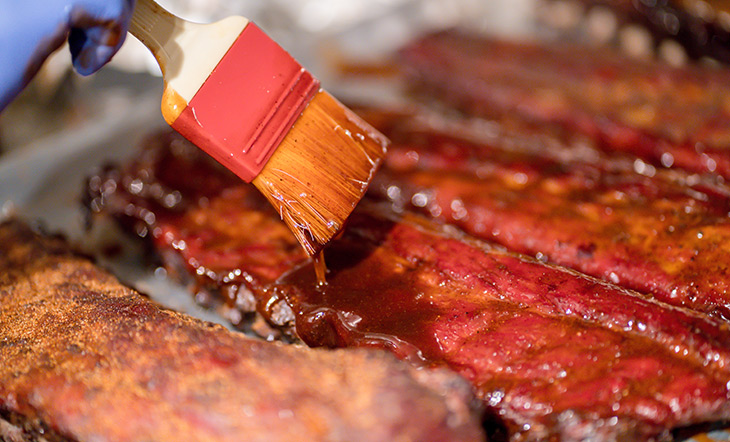The African Roots of the Food On Your Plate
How enslaved Africans and their descendants shaped our soda, barbecue, and more
Maggie BordenFebruary 10, 2021

It’s time to ditch the metaphor of America as a melting pot, especially when it comes to what people in the United States cook and eat. There is no giant stew bubbling away, taking in millions of flavors and experiences to yield something singularly American. The food we eat today is the result of preservation of traditions and techniques, experimentation and adaptation, and cross-pollination spurred by both forced and voluntary migration across the country.
This month, we’re announcing the first round of grantees for our Investment Fund for Black and Indigenous Americans. We launched this fund precisely because these two communities have contributed so much to the American food system, while enduring centuries of systemic oppression and exploitation (which continues to this day). This will be the first round of many, and we are actively seeking new funding to give as much assistance as possible (read more about how you can help here).
As part of Black History Month, we’re celebrating the contributions of Black Americans to our nation’s table, from food to beverage to science and literature. Stay tuned to our Instagram for facts, events, discussions and more.
Below are just a few examples of dishes, ingredients, and techniques that were shaped by the hands of enslaved Africans and their descendants into the delicious food and drink we still enjoy today.
Gumbo
This stew, the official state cuisine of Louisiana, is most frequently associated with Cajun and Creole cooking, but the dish’s name reveals direct ties to Africa. The word for okra in multiple West African languages is “ki ngombo” or “gombo” in its abbreviated form. Gumbo is believed to be an adaptation of West African stew featuring okra as its main ingredient, and the first known reference to the dish in the United States has been traced back to 1764, just a few decades after the first ships carrying enslaved Africans arrived in Louisiana.
Coca-Cola
The first half of Coca-Cola’s name usually gets all the attention, since in its original formulation, the “coca” referred to cocaine (derived from the coca leaf). But the latter half’s origin is just as interesting. The “cola” in America’s favorite soft drink refers to the kola nut, a fruit of (no surprise) the kola tree which is native to the rainforests of West Africa. Coca-Cola’s inventor, chemist John Pemberton, probably included kola nut extract because the fruit contains natural stimulants like caffeine. Europeans didn’t get hip to the kola nut until the fifteenth century, but Africans had been domesticating the plant and chewing its fruit for centuries. Kidnapped Africans used kola nuts to “freshen the fetid water on slave ships,” according to UCLA professor of geography Judith Carney.
Barbecue
America’s first pitmasters were enslaved Africans, tasked with preparing and cooking meat for plantation owners and their families. Preserving meat (predominantly pork in the South) in those times required an arduous process of slaughtering, butchering, salting, and hanging cuts to smoke and cure. Unsurprisingly, the white planters would get the best cuts, while enslaved workers were given the leftovers for their rations—feet, heads, ribs, fatback and offal. To improve the taste of these off-cuts, enslaved people looked to West African cuisines and used the hot peppers grown in their gardens mixed with vinegar to season the pork. This pepper-vinegar combination is the foundation of many of the barbecue sauces Americans slather on today.
Coffee
Although coffee is often associated with the Middle East (one type of bean is called arabica, after all), the birthplace of this beverage is the forests of Ethiopia. No one knows for sure who first discovered the energetic qualities of the coffee tree, but a popular legend says that an Ethiopian goatherd stumbled upon the stimulant when his flock chowed down on the berries and started “dancing." Whether or not the legend is true, there’s no question about the significance of Ethiopia to coffee’s trajectory—Yemeni traders were introduced to coffee in the fifteenth century, and it spread across the region and then the world from there.
Cornbread
Corn was the most common ration given to the South’s enslaved people, since corn grew easily—which meant plantation owners could save their best land for cash crops and grow corn on the less fertile land. Enslaved workers ate corn at almost every meal, and drew on the traditions and techniques of Indigenous Americans to make cornmeal cakes wrapped in leaves and baked in ashes (these breads were called a variety of names—hoecakes, spoonbread, corn pone, and more). After the Civil War, historian and James Beard Award–winning cookbook author Toni Tipton-Martin says, freed slaves and their descendants continued to adapt cornbread, developing Southern staples like griddle cakes, muffins, and hush puppies.
Register for our February 17 webinar, "Know Your Black History."
Learn more about the Investment Fund for Black and Indigenous Americans.






